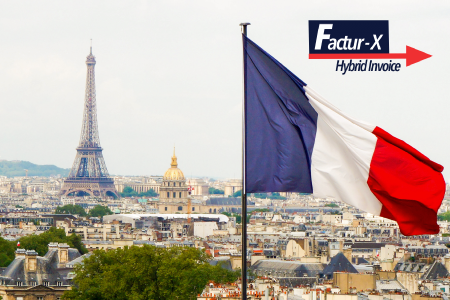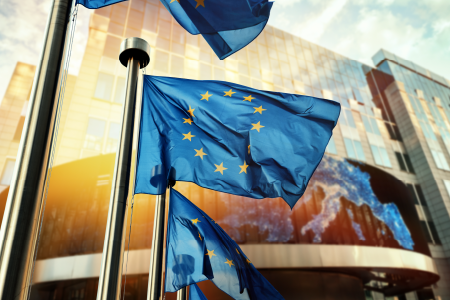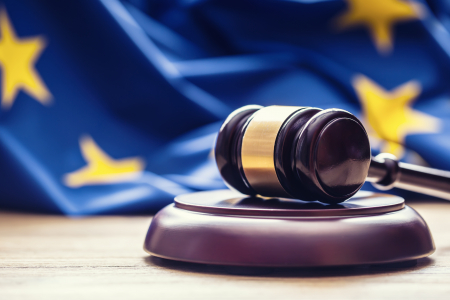Update - October 19, 2022
With the arrival of the EU E-Invoicing Directive 2014/55/EU, it became clear that The Netherlands—and all other countries in the EU—had to make business-to-government (B2G) e-invoicing mandatory. For The Netherlands, that deadline has well passed, and today, e-invoicing is gaining momentum—even in the B2B space!
In The Netherlands, all public and contracting government authorities must be able to receive e-invoices. The implementation of e-invoicing has been executed by the adoption of the Peppol framework for setting up an exchange infrastructure. Currently, all Dutch government agencies have direct or indirect connections to the Peppol infrastructure. This is the so-called DIGIPOORT, used for the reception of electronic invoices.
From a global point of view, it’s clear that e-invoicing is here to stay, and, especially in The Netherlands, it’s taking over as the preferred invoice exchange method - regardless of industry.
E-invoicing is here to stay in today's B2G and B2B environment and we expect it to only continue to grow in The Netherlands. But let's start at the beginning....
E-Invoicing History to Date
E-invoicing was introduced in The Netherlands on January 1st, 2011. From that moment on, central government agencies were legally required to be able to receive and process e-invoices via Digipoort, the central hub where message traffic for the government is handled.
The obligation to send e-invoices was extended to central government suppliers on January 1st, 2017. It wasn’t until August 2019, however, that this was strictly monitored or enforced; the central government wanted to give entrepreneurs time to prepare for the new way of invoicing.
On April 18th, 2019, the e-invoicing obligation was further extended to all Dutch sub-central governments (in addition to central governments), government organizations, and other contracting authorities. This meant that these public authorities also had to be able to receive and process e-invoices from their suppliers according to the European standard format.
But this didn’t mean that all Dutch government agencies had fully switched to e-invoicing by April 2019. That’s because their suppliers were not legally required to send e-invoices—public authorities only had to be capable of receiving and processing e-invoices should any number of their suppliers choose to utilize it. Not surprisingly, the majority of suppliers opted to stick to their usual way of doing business. They were reluctant to switch to e-invoicing because they were more comfortable sending the paper invoices or scanned PDFs that they had been creating for years. In practice, this situation still occurs regularly.
All of this, combined with the fact that the Dutch central government—until August 2019—did not strictly monitor or enforce e-invoicing, meant that e-invoicing didn’t really take off in The Netherlands until almost 10 years from when it was first introduced back in 2011.
That brings us to today. The Netherlands is finally at the point in which enough public and private sector organizations have adopted e-invoicing for its benefits to be more widely addressed within the business community. Despite the lack of mandate at the state level for suppliers to send e-invoices, we’re starting to see that more and more public authorities are encouraging their suppliers to make the switch by communicating the “why” behind something that otherwise seems to be nothing more than an inconvenience. And now, with the help of onboarding services from service providers like SPS Commerce, the transition to e-invoicing can be quite simple for suppliers.
How Can I Get Started with E-Invoicing?
If you’re a supplier, there are various ways in which you can send e-invoices, so the first step is to determine which solution is right for you based on your specific needs. To figure this out, you can start by calculating the number of invoices you send each month or each year along with the number of customers you have. From there, you should also evaluate the capabilities of your ICT infrastructure. If you’re a buyer, the initial “getting started” process is virtually the same, only the other way around, of course.
If you’re getting started with B2G e-invoicing in The Netherlands, the Dutch government is connected to the secure Peppol network. That being said, it’s absolutely critical to choose a service provider that acts as a Peppol Access Point (AP), such as SPS Commerce. In doing so, you’ll be able to send e-invoices to all connected institutions in The Netherlands and abroad, including private organizations, with one simple connection. The Peppol network is also increasingly being used in the B2B space, so choosing a service provider that serves as an AP is a smart choice regardless.
You can send invoices via Peppol in the following ways:
- A direct link to the network via your accounting software or ERP
- Convert the PDFs generated by your accounting system to the accepted format with a solution like PDF-2-FLOW
- Manually via a portal
- Via Digipoort (only for central government suppliers)
Different governments and municipalities offer different options. SPS Commerce is a service provider to the central government, the Municipality of Amsterdam and the Municipality of Rotterdam, among others. See the options offered by these government agencies here.
Standards
Several standards are used for e-invoicing in The Netherlands. In sum, standards describe the rules for the specific formatting of electronic messages (like invoices and purchase orders). By standardizing the structure of the messages, diverse systems are able to understand the data and process it accordingly.
UBL-OHNL: Used by the Dutch government for the procurement of goods and services, except for the hiring of personnel (based on the international UBL standard)
SETU (HR-XML)-OHNL: Used for the hiring of personnel.
Basis Invoice Rijk (BFR): Used for e-invoices within the central government
Peppol BIS: Ensures cross-border interoperability for those utilizing the Peppol network
NLCIUS: An additional specification to the mandatory European standard (EN 16931) that is only applicable in The Netherlands and describes how e-invoicing with the government works (can also be used in B2B instances)
The above standards are mainly, but not exclusively, used by the government. If you’re interested in learning more about the various standards in use for specific industries and regions, here’s a good overview.
Besides those listed above, it’s also important that we mention the ISO 27001 standard. It’s an internationally recognized standard on information security, and up-to-date certification is now mandatory for all service providers in The Netherlands that wish to serve as a Peppol Access Point. So, include this as an important point while evaluating service providers.
The Future of E-Invoicing & E-Procurement
As more and more Dutch public authorities begin to double down on their e-invoicing requirements, an increasing number of large organizations, like Rabobank, PostNL, and KPN, are beginning to embrace the switch. Today, it is no longer a question of if you will send e-invoices in the future, but rather a question of when.
As a matter of fact, we’re also starting to see that some countries have already begun to enforce B2B e-invoicing, like France. This hasn’t happened in The Netherlands yet, but judging from how things are moving along, we can assume it’s a highly likely possibility.
And as many organizations have already realized, the logical digitalization step that follows the implementation of e-invoicing is e-procurement. Many businesses are already on their way to a fully automated procure-to-pay process, and it’s only a matter of time before sending all documents electronically becomes the norm—it won’t stop at e-invoicing.
Conclusion
To conclude, as many organizations have already noticed, the logical digitization step that follows the implementation of e-invoicing is e-procurement. Many companies are already moving towards a fully automated purchase-to-pay process, and it is only a matter of time before sending all documents electronically becomes the standard.
Keep an eye out for changing regulations in The Netherlands!





